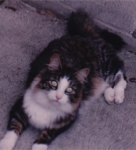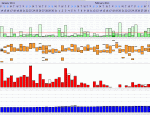I’m very new at this, so this is probably a dumb question, but I appreciate any feedback you have.
I’ve recently started using a s8 Resmed Autoset II, and am trying to find out my data through the clinician menu, but seem to be having an issue with the machine flagging apneas and hypopneas that are happening while I’m awake. I had tested the machine for mask issues several times when awake, checked the data, and it said AHI 10 and 20 several times. I have only used it one night so far, and checked the data, which said AHI 9.2, but I can't tell if these are true apneas or false positives (i.e,I was awake.) Leak rate is low (.02).
In scanning this thread viewtopic.php?f=1&t=80329&st=0&sk=t&sd=a
it looks like machines cannot differentiate between a true apnea that happens while asleep and a variation on breathing that happens while awake, and may falsely flag breathing while awake as apneas. If this is the case, this is a problem for me, because currently I have major sleep problems (insomnia and staying asleep). Most nights I take a lot longer than 45 minutes (the maximum ramp time) to fall asleep, and often spend a long time in bed awake trying to get back to sleep.
So does this mean that I have no way of knowing at all how I am doing with the AHI numbers as long as I’m spending this long awake? I don't have a full data software to go with it, if this is even available.
falsely flagged apneas?
- Lizistired
- Posts: 2835
- Joined: Tue Dec 14, 2010 10:47 pm
- Location: Indiana
Re: falsely flagged apneas?
Of course it can't. It monitors your breathing. Wear it awake to get used to it, but don't expect the machine to determine why you stopped breathing or closed your airway. The events are not false. They happened.
I don't know what data you get off of that machine but if you get any graph data, you could turn the machine off and back on again when you get drowsy and are ready to go to sleep and create a break in the data as a marker for you.
I don't know what data you get off of that machine but if you get any graph data, you could turn the machine off and back on again when you get drowsy and are ready to go to sleep and create a break in the data as a marker for you.
_________________
| Humidifier: S9™ Series H5i™ Heated Humidifier with Climate Control |
| Additional Comments: Swift FX sometimes, CMS-50F, Cervical collar sometimes, White noise, Zeo... I'm not well, but I'm better. |
ResScan: http://www.resmed.com/int/assets/html/s ... c=patients
ResScan Tutorial- http://montfordhouse.com/cpap/resscan_tutorial/
Machines Video: http://www.cpaplibrary.com/machine-education
ResScan Tutorial- http://montfordhouse.com/cpap/resscan_tutorial/
Machines Video: http://www.cpaplibrary.com/machine-education
Re: falsely flagged apneas?
fieldoflife,
First: Are you aware that the s8 Resmed Autoset II is a machine that is no longer being made? It was replaced by the Resmed S9 AutoSet at least 2 years ago. While the ResScan software will work with your machine, you will need to find the proprietary card reader if you want yo look at your detailed data in ResScan. They are sometimes available on Ebay, usually with an Israeli shipper.
Next you write:
And as you've discovered, our wake breathing is irregular enough where the machine will flag events. There's just no way around this if you are going to have long periods of WAKE when you are using the mask. More about this in a minute.
For now, simply ignore the events scored during times you know or suspect you were awake. Since you say it takes you longer than 45 minutes to fall asleep, ignore ant events scored during the first hour, for example. Likewise--ignore any events that occur during wakeful periods during the night. Manually estimate your "real" AHI by dividing the number of events scored during times you think you were asleep by the estimated time you slept for the night. This may mean that you will need to keep a sleep log.
If your insomnia is an old problem that predates your starting CPAP, you need top be aware that CPAP will not necessarily solve your other sleep problems. And you won't likely feel better until your other sleep problems are addressed as well as the OSA.
So: Have you any idea what is the cause of your insomnia? Did it start well before you started CPAP? Or has the problem started with your starting CPAP? Have you ever sought medical help for dealing with your insomnia? If so, what have you done to address the insomnia and how well did it work?
Have you ever heard of sleep hygiene? Because it sounds as though yours could use some work. One starting point for taming insomnia is to NOT lie in bed for long periods of time while NOT sleeping. If you are not asleep in about 30 minutes of lying down, you may want to get out of bed and go into a different room to do something quiet, relaxing, and sleep inducing. Go back to bed only when you are feeling really sleepy. And learn to distinguish between feeling sleepy and feeling tired. Same thing when you wake up in the middle of the night and can't get back to sleep in a timely fashion: Get out of bed and go into a different room to relax and get sleepy. The idea is to tach your body that Being in Bed = Time for Sleep. Of course, getting out of bed will also reduce those long periods of time when you are using the mask while awake. And that will reduce the number of "false events" scored because you are awake.
First: Are you aware that the s8 Resmed Autoset II is a machine that is no longer being made? It was replaced by the Resmed S9 AutoSet at least 2 years ago. While the ResScan software will work with your machine, you will need to find the proprietary card reader if you want yo look at your detailed data in ResScan. They are sometimes available on Ebay, usually with an Israeli shipper.
Next you write:
Your S8 Autoset is not Santa Claus: It cannot tell when you're awake and it cannot tell when you're asleep. The reason is simple: There is no EEG to measure your brain waves. And the makers of the machine assume that you will be asleep for the vast majority of the time you are using the machine. Hence any time the machine detects an 80% or 90% drop in airflow into/out of your lungs that lasts for 10 seconds or more is scored as an apnea. And anytime the machine detects a drop of about 40% in the airflow, your machine will score a hypopnea. (And the S8's are known for being very aggressive in scoring Hs.)fieldoflife wrote:am trying to find out my data through the clinician menu, but seem to be having an issue with the machine flagging apneas and hypopneas that are happening while I’m awake. I had tested the machine for mask issues several times when awake, checked the data, and it said AHI 10 and 20 several times. I have only used it one night so far, and checked the data, which said AHI 9.2, but I can't tell if these are true apneas or false positives (i.e,I was awake.)
And as you've discovered, our wake breathing is irregular enough where the machine will flag events. There's just no way around this if you are going to have long periods of WAKE when you are using the mask. More about this in a minute.
For now, simply ignore the events scored during times you know or suspect you were awake. Since you say it takes you longer than 45 minutes to fall asleep, ignore ant events scored during the first hour, for example. Likewise--ignore any events that occur during wakeful periods during the night. Manually estimate your "real" AHI by dividing the number of events scored during times you think you were asleep by the estimated time you slept for the night. This may mean that you will need to keep a sleep log.
On the S8, the reported leak is unintentional or excess leak. It is measured in L/second. (On the S9, the leak is measured in L/minute.) Resmed defines a Large leak as any leak that is over 0.4 L/second. So you are correct: Your leak is low and quite acceptable.Leak rate is low (.02).
I bid you a sad welcome to the CPAP&Insomnia Club.... currently I have major sleep problems (insomnia and staying asleep). Most nights I take a lot longer than 45 minutes (the maximum ramp time) to fall asleep, and often spend a long time in bed awake trying to get back to sleep.
If your insomnia is an old problem that predates your starting CPAP, you need top be aware that CPAP will not necessarily solve your other sleep problems. And you won't likely feel better until your other sleep problems are addressed as well as the OSA.
So: Have you any idea what is the cause of your insomnia? Did it start well before you started CPAP? Or has the problem started with your starting CPAP? Have you ever sought medical help for dealing with your insomnia? If so, what have you done to address the insomnia and how well did it work?
Have you ever heard of sleep hygiene? Because it sounds as though yours could use some work. One starting point for taming insomnia is to NOT lie in bed for long periods of time while NOT sleeping. If you are not asleep in about 30 minutes of lying down, you may want to get out of bed and go into a different room to do something quiet, relaxing, and sleep inducing. Go back to bed only when you are feeling really sleepy. And learn to distinguish between feeling sleepy and feeling tired. Same thing when you wake up in the middle of the night and can't get back to sleep in a timely fashion: Get out of bed and go into a different room to relax and get sleepy. The idea is to tach your body that Being in Bed = Time for Sleep. Of course, getting out of bed will also reduce those long periods of time when you are using the mask while awake. And that will reduce the number of "false events" scored because you are awake.
_________________
| Machine: DreamStation BiPAP® Auto Machine |
| Mask: Swift™ FX Nasal Pillow CPAP Mask with Headgear |
| Additional Comments: PR System DreamStation and Humidifier. Max IPAP = 9, Min EPAP=4, Rise time setting = 3, minPS = 3, maxPS=5 |










